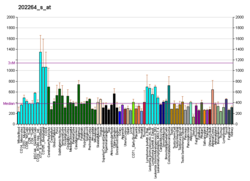| TOMM40 | |||||||||||||||||||||||||||||||||||||||||||||||||||
|---|---|---|---|---|---|---|---|---|---|---|---|---|---|---|---|---|---|---|---|---|---|---|---|---|---|---|---|---|---|---|---|---|---|---|---|---|---|---|---|---|---|---|---|---|---|---|---|---|---|---|---|
| Identifiers | |||||||||||||||||||||||||||||||||||||||||||||||||||
| Aliases | TOMM40 , C19orf1, D19S1177E, PER-EC1, PEREC1, TOM40, translocase of outer mitochondrial membrane 40 | ||||||||||||||||||||||||||||||||||||||||||||||||||
| External IDs | OMIM: 608061; MGI: 1858259; HomoloGene: 101105; GeneCards: TOMM40; OMA:TOMM40 - orthologs | ||||||||||||||||||||||||||||||||||||||||||||||||||
| |||||||||||||||||||||||||||||||||||||||||||||||||||
| |||||||||||||||||||||||||||||||||||||||||||||||||||
| |||||||||||||||||||||||||||||||||||||||||||||||||||
| |||||||||||||||||||||||||||||||||||||||||||||||||||
| |||||||||||||||||||||||||||||||||||||||||||||||||||
| Wikidata | |||||||||||||||||||||||||||||||||||||||||||||||||||
| |||||||||||||||||||||||||||||||||||||||||||||||||||
Mitochondrial import receptor subunit TOM40 homolog is a protein which in humans is encoded by the TOMM40 gene. [5] [6]




